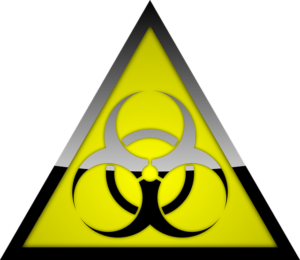People are often suggesting that we stay positive or look on the bright side, especially when things aren’t going very well. How do you do this? Take control of your thoughts! Do not allow negativity to turn over and over in your mind like a rotisserie chicken!
1. Be Grateful
Sometimes the ideas presented by religion seem strange and useless, but sometimes they turn out to be better ideas than they might seem at first. An old Jewish saying recommends that we “bless one thousand things every day,” here “bless” being read “be grateful for.” Just like the in “seventy times seven” parable, the thousand isn’t exactly literal, it just means “a lot.”
This little mantra reminds us to look for things in our day to be grateful for, and science has only recently begun to recommend the same thing. Whether you’re religious or not, acknowledging the things that you are grateful for every day can help to hardwire your brain to notice the positive things more quickly.
Jotting down 5 things you are grateful for at the end of the day can completely change the way you perceive the days events.
Starting your day with a “thank you” that you are alive and have another chance sets the tone for a good day.
2. Be Aware Of Your Negative Thoughts
Mindfulness is the practice of paying attention, usually to your breath or your thoughts. Mindful breathing is often used to control stress, but mindful thinking can lead to a more positive life. We tend to take our thoughts for granted but they can still make a difference as they float through our minds.
Speaking to The Huffington Post, Dr. Joffrey Suprina explained that when we pay more attention to what thoughts we’re actually having throughout the day it can be easier to shake off the negative thoughts and focus on the positive.
If you are caught in a “rotisserie chicken” loop of negative thoughts, stop whatever you are doing and breath in to a count of 4, hold for a count of 4, breath out for a count of 4 and pause for a count of 4. Often this simple exercise will help you calm down, stop the anxiety and negative thoughts. Repeat as needed.
3. Introduce Positive Thoughts
The staff at The Mayo Clinic point out that just like our thoughts can upset us when we don’t notice them, we also purposely introduce thoughts that make ourselves feel better. Trying to replace negative thoughts from our subconscious with positive thoughts from our conscious mind can be a very valuable tool.
The staff at the Mayo Clinic also points out, however, that these thoughts till need to be practical for them to work. Ignoring the negative isn’t thinking positive. Thinking positive is about making the best out of the worst that life gives us.
4. Avoid Negative People
Writing for Psychology Today, Dr. Gregory Jantz wrote that it is difficult for us to be positive when we are surrounded by negative people. That means people who practice negativity as well as people who somehow bring out the negativity in us. Dr. Jantz doesn’t necessarily say that we need to remove these people from our lives forever, just while we’re first learning to become more positive. Kind of like how people who are quitting smoking find it hard to be around smokers for the first few days but eventually they’re okay to be around other smokers again.
Be honest about who is a negative influence on you and limit interaction with those people.
5. Look At Challenges As Opportunities
An article by author Paul Sloane published by Lifehack.org recommends looking at potential challenges or setbacks as opportunities to go in another direction.
We tend to look at where we are as the culmination of a lot of hard work and so when things don’t go our way we feel like that work was for nothing. In many cases, however, our achievements can be the result of hard work without being the culmination of hard work and what we thought was our best can really be a stepping stone to what lies ahead.
6. Spend Time In “Input Mode”
A 2016 article by Inc. points out that we are either in “input” mode or “output” mode. Output mode is when we are doing or making things, like when we are at work or doing things for our family and friends. Input mode is when we are doing things for ourselves like reading books. We can develop negative thoughts when we spend too much time in output mode and we can become more positive people by spending more time in input mode.
7. Schedule your positive “input”
I have books that make me happy, so I plan to re-read them on a regular schedule. I have a playlist on my phone of “happy music”. I limit consumption of news. I have scheduled times to journal my emotions and add to my gratitude list. I have said it before and it’s worth repeating a million times: Self care is not selfish, it’s survival! So plan your positive input!
You would not program your computer with virus’s and malware, give yourself the same courtesy. Program your self with positive input!


